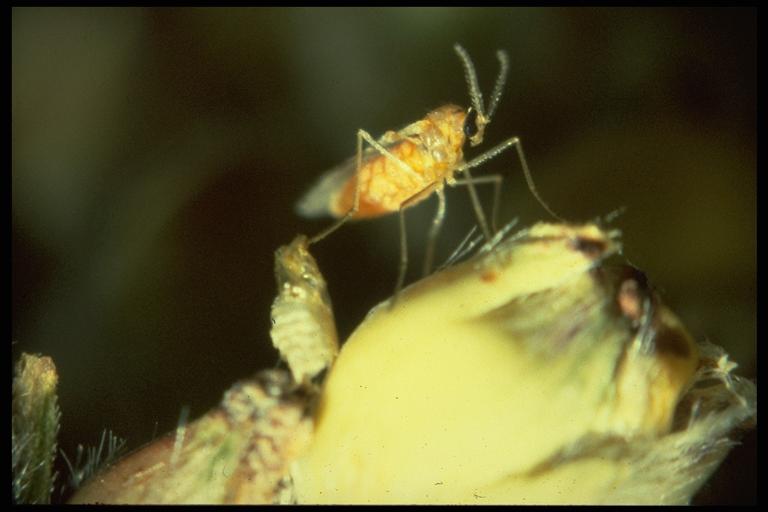
Sorghum midge, Contarinia sorghicola (Coquillett) (Diptera: Cecidomyiidae). Photo by Drees.
Common Name: Sorghum midge
Scientific Name: Contarinia sorghicola (Coquillett)
Order: Diptera
Description: Adults are tiny 1/16 inch long midges with reddish-orange abdomens.
Life Cycle: Winter months are spent in the larval stage in aborted sorghum seeds. In the spring, adults emerge and are attracted to flowering host plants. They deposit white, cylindrical eggs on stalks in the spikelets of flowers. Colorless spindle-shaped larvae hatch from eggs in 2 to 3 days and develop through several molts, gradually changing color from pink to reddish-orange. They pupate in the spikelets and overwinter in cocoons in spikelets. Pupae are dark orange and become darker as adults develop inside. The development from egg to adult is complete in 14 to 16 days. Several generations are completed in Johnsongrass seed before the generation that damages sorghum seed.
Habitat and Food Source(s): Larvae have rasping mouthparts. Johnsongrass and sorghum are the primary hosts, although they can develop on some other grasses. Larvae feed on the developing ovary of sorghum seeds, preventing normal development. Adult stages can be monitored by slipping a plastic bag around the flowering sorghum panicle (seed head).
Pest Status: Immature stages injure developing sorghum seeds and are one of the most important pests of this crop; medically harmless.
Damage: Injury results in sorghum heads with small or malformed seeds that appear blighted or “blasted.”
For additional information, contact your local Texas AgriLife Extension agent or search for other state Extension offices.
Literature: Carter et al. 1982.